
10 colleges where women graduates earn more than men
This story originally appeared on EDsmart and was produced and distributed in partnership with Stacker Studio.
10 colleges where women graduates earn more than men
While more women are attending college than ever before, they continue to earn less than their male counterparts, according to an analysis of 2020 Census data from the Women's Bureau of the Department of Labor. But that's not true of women graduates from every university.
EDsmart examined data from the U.S. Department of Education's College Scorecard to find which schools produce the highest-earning women graduates compared to men graduates from the same institution 10 years after graduation. For this analysis, only schools that primarily award undergraduate degrees were included, and gender determination was based on binary classifications from school records. In the event of a tie, the school with the highest median salary overall was used.
Median earnings were calculated for students who had received financial aid, were working 10 years out of college, and were no longer enrolled in school. Data is based on wages reported to the IRS via W-2 tax forms. It does not account for variation across programs within an institution, which the Education Department notes may be even greater than earnings across schools.

#10. Viterbo University
- Location: La Crosse, Wisconsin
- Median women's earnings: $47,700
- Median men's earnings: $46,700
- Difference: $1,000
Viterbo University is a private Catholic university with a long tradition of honoring distinguished women graduates. The school in 2020 awarded all eight of its Distinguished Alumni awards to women. The honorees have a wide range of professional accomplishments, from a 2012 graduate who is now a Broadway performer to the CEO of an education-focused consulting firm.
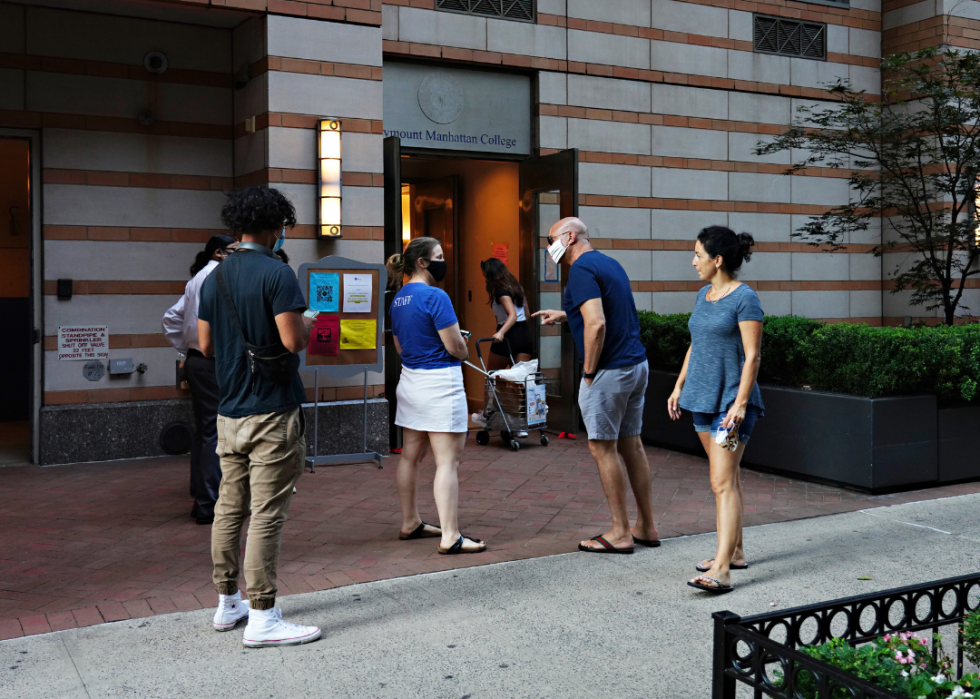
#9. Marymount Manhattan College
- Location: New York City
- Median women's earnings: $45,800
- Median men's earnings: $44,600
- Difference: $1,200
Marymount began as a two-year women's college in 1936. It has since expanded to encompass a more diverse student body, including men and nontraditional students. Among the school's most successful alumnae is Kiley Reid, author of the critically acclaimed novel "Such a Fun Age."

#8. Oklahoma Wesleyan University
- Location: Bartlesville, Oklahoma
- Median women's earnings: $54,100
- Median men's earnings: $52,400
- Difference: $1,700
One stat may explain why Oklahoma Wesleyan University's women graduates out-earn their male counterparts: The school's most popular major is nursing, a typically female-dominated profession that is also highly paid. High demand for nurses has pushed salaries even higher.

#7. American International College
- Location: Springfield, Massachusetts
- Median women's earnings: $51,200
- Median men's earnings: $48,300
- Difference: $2,900
American International College is a private university offering traditional academic majors as well as a number of professionally oriented programs. Among these are degrees in nursing and business. The school also has a rich tradition of sending graduates to work in politics. One notable graduate, former Massachusetts Sen. Dianne Wilkerson, went on to law school before entering politics: two careers typically associated with steep salaries.
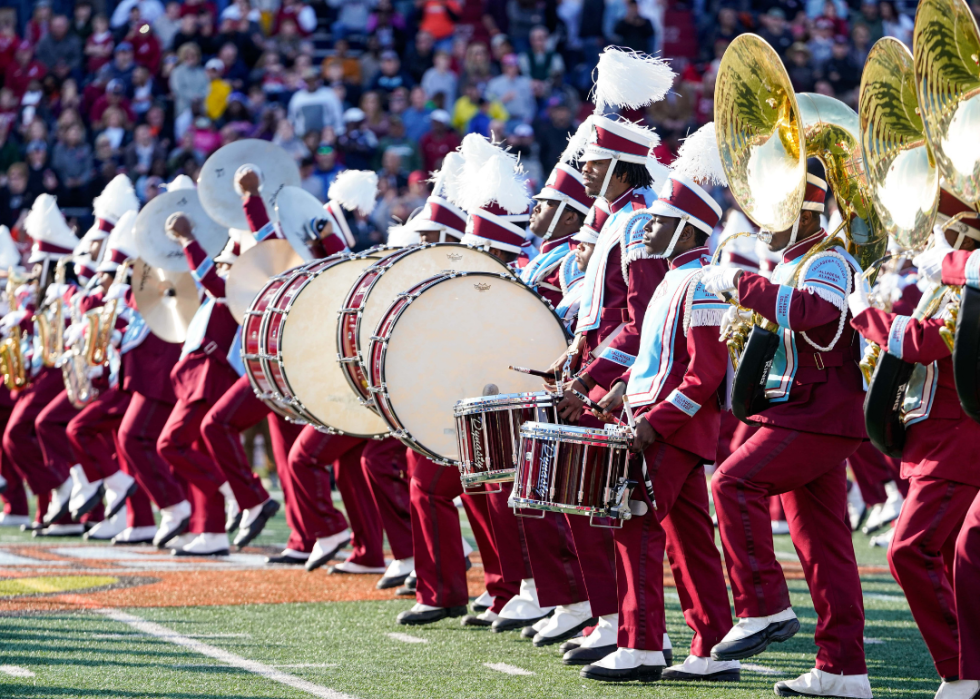
#6. Talladega College
- Location: Talladega, Alabama
- Median women's earnings: $25,300
- Median men's earnings: $22,200
- Difference: $3,100
Talladega College is Alabama's oldest private, historically Black college. Many famous Black women leaders attended the school, including Margaret Bush Wilson, a barrier-breaking lawyer, and Carol Brice, a famous contralto singer. No matter what career women pursue at Talladega College, from the corporate world to the arts, many alumnae who came before are showing what's possible.
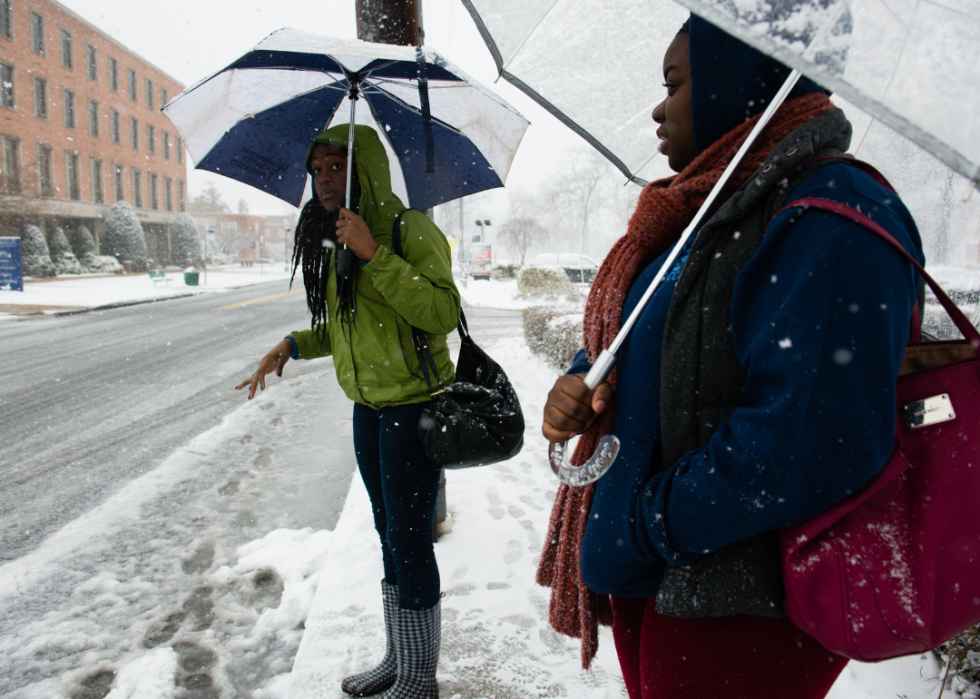
#5. Washington Adventist University
- Location: Takoma Park, Maryland
- Median women's earnings: $47,500
- Median men's earnings: $43,800
- Difference: $3,700
Washington Adventist University is a private, Seventh-day Adventist university with popular majors that may play a role in determining why female graduates out-earn men: nursing and health and medical administrative services. Women are overrepresented in these professions, and due to burnout from the pandemic, those who do choose to stick it out in health care positions are being offered extremely competitive salaries.

#4. Cumberland University
- Location: Lebanon, Tennessee
- Median women's earnings: $44,600
- Median men's earnings: $40,900
- Difference: $3,700
Cumberland University is a private university dating back to the mid-19th century. The school's education program had a 100% success rate with placing students in jobs, according to a 2019 state ranking. Women are extremely overrepresented in teaching roles compared to men, which may help to explain why the school has such a good track record for female graduates.

#3. San Francisco Art Institute
- Location: San Francisco
- Median women's earnings: $40,700
- Median men's earnings: $36,500
- Difference: $4,200
San Francisco Art Institute is a private art school counting a number of extremely famous artists among its alumnae the school. Among these is director Kathryn Bigelow, who in 2010 became the first woman to win the Academy Award for Best Director. Figurative painter Joan Brown also attended the San Francisco Art Institute; her work has been celebrated widely with shows at museums including the Whitney.
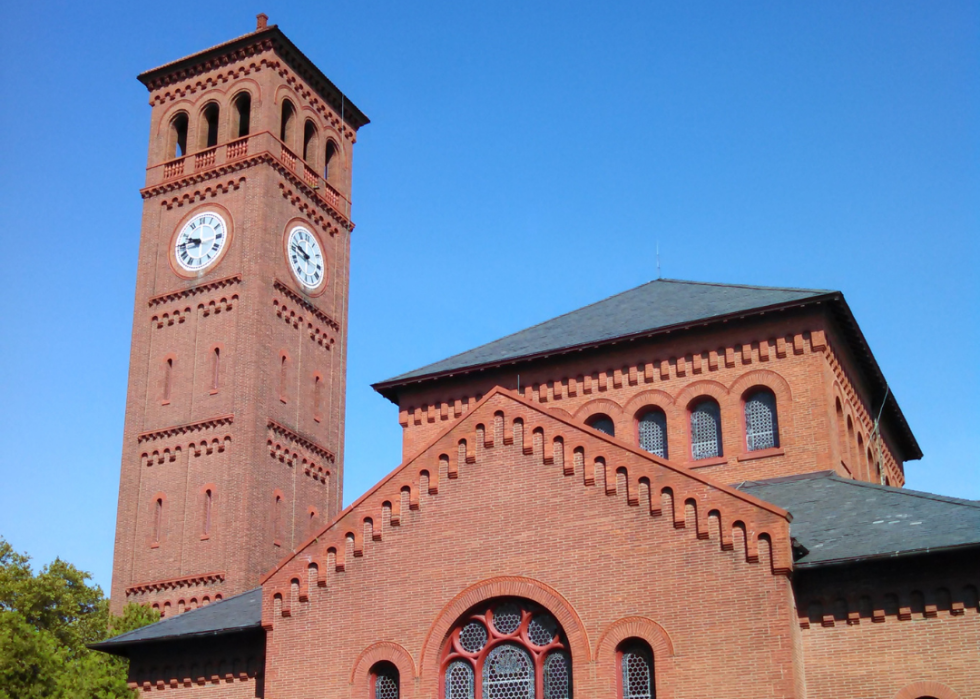
#2. Hampton University
- Location: Hampton, Virginia
- Median women's earnings: $52,000
- Median men's earnings: $46,900
- Difference: $5,100
Hampton University is a private, historically Black college in Virginia. One of the school's most common majors is psychology. Far more women than men study psychology and become therapists. Therapy is also a relatively well-paying profession, with professionals earning more than the national average.
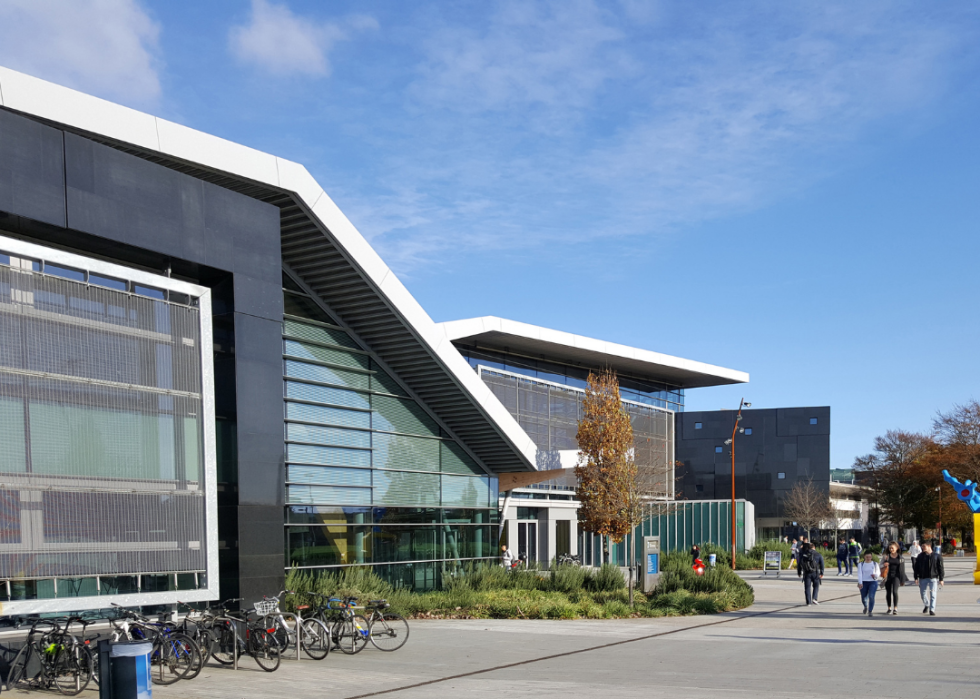
#1. Holy Names University
- Location: Oakland, California
- Median women's earnings: $60,400
- Median men's earnings: $50,200
- Difference: $10,200
Holy Names University opened in the mid-19th century as a convent, only becoming coeducational in the early 1970s. It still awards nearly three-quarters of its degrees to women, as of 2020. With such a rich history of cultivating and supporting women, along with its current demographic breakdown, it may be no surprise that women—of whom there are simply more, including more potential high-earners—out-earn men at the school.



